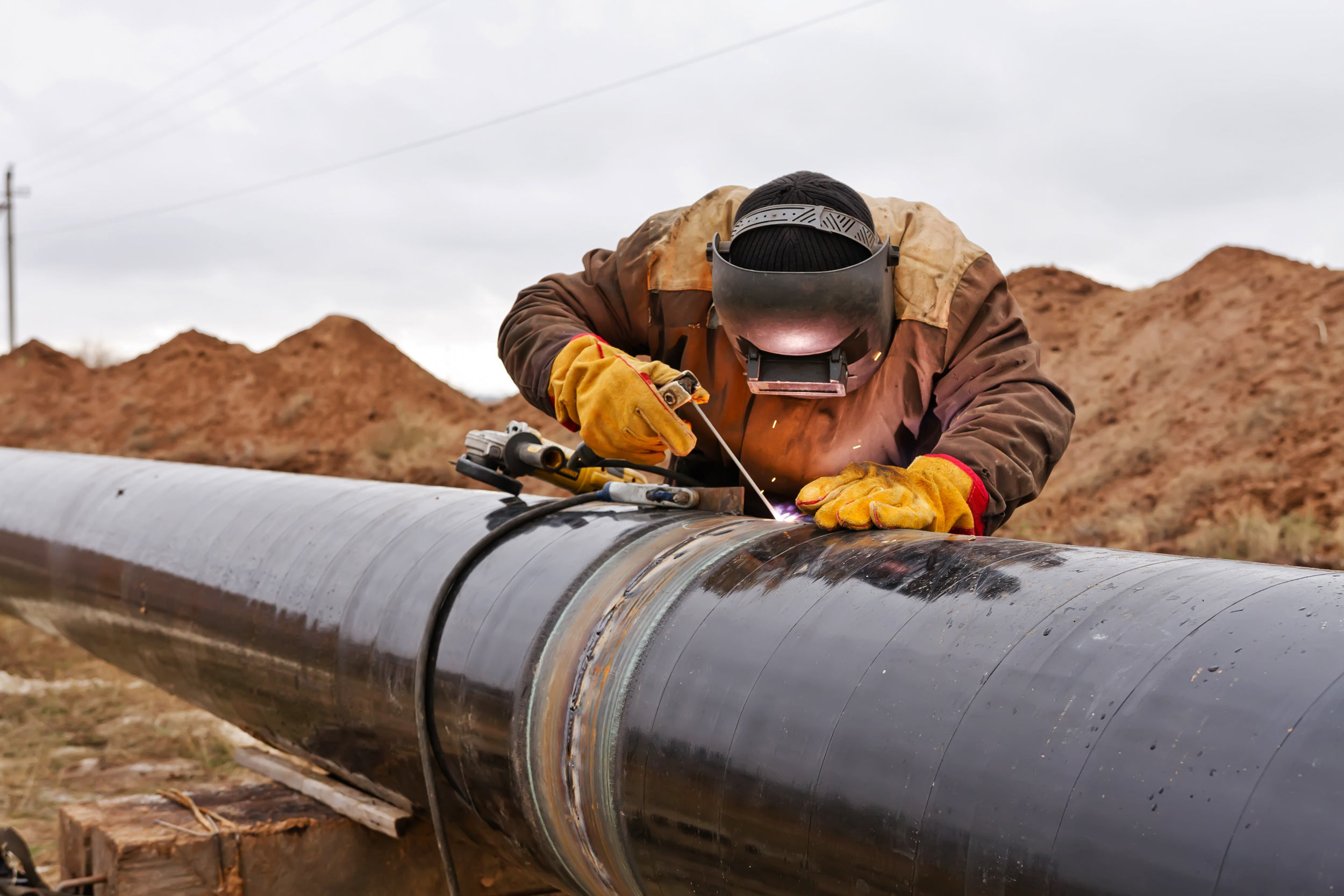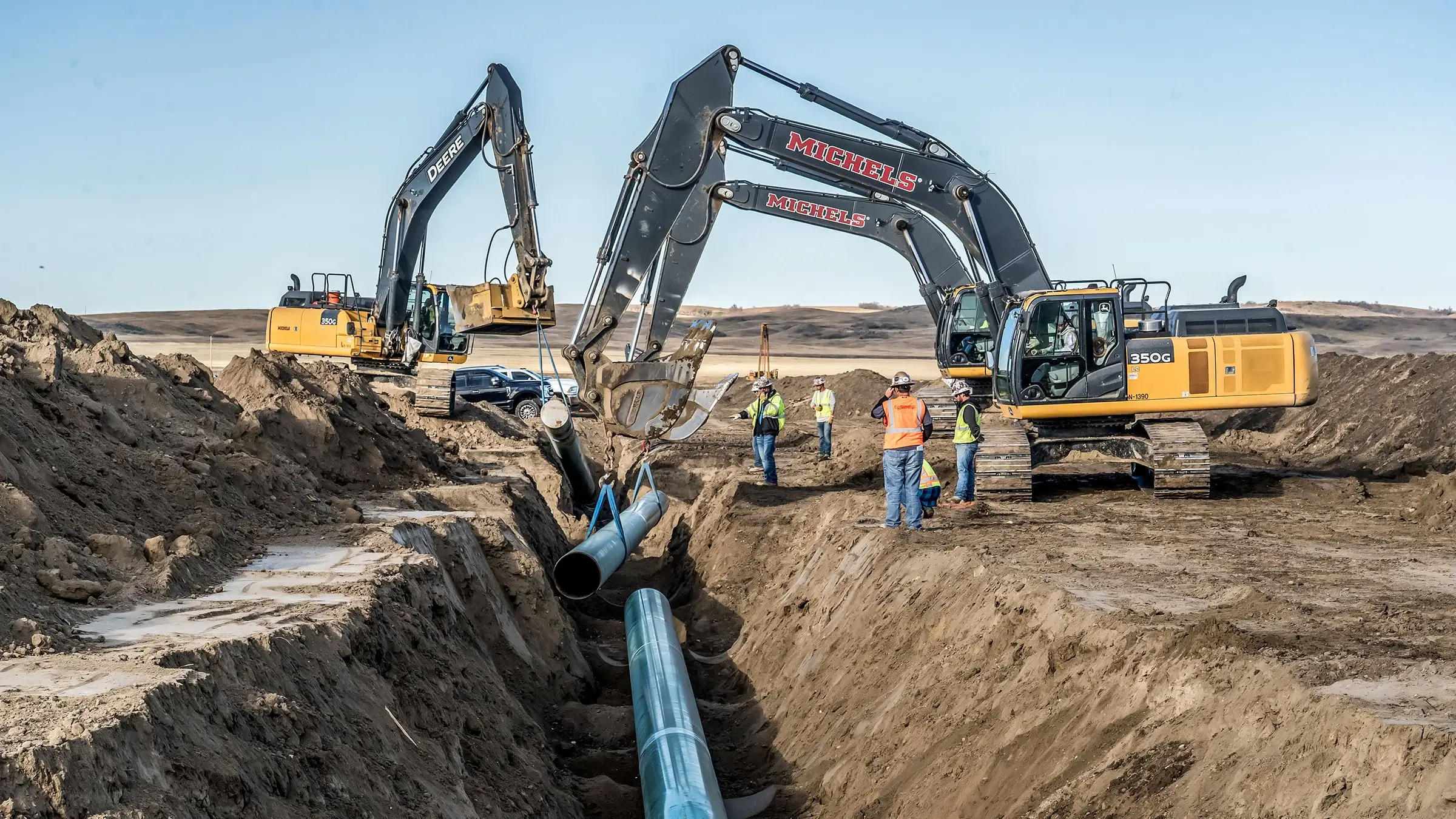Why Durable Systems Start With Proper Creek Pipe HDPE installation
What You Ought To Know Concerning Pipe Trenching Solutions: A Comprehensive Introduction of Available Options
Pipe trenching services are vital for the setup and maintenance of underground utilities. They involve numerous methods tailored to certain demands and atmospheres. Comprehending these approaches is essential for effective project implementation. Each option presents its own collection of benefits and challenges. As the need for efficient utility management rises, recognizing what to think about when selecting a trenching solution comes to be critical. What variables should one prioritize to guarantee success?
Recognizing Pipe Trenching: What It Is and Why It Issues
Although commonly ignored, pipe trenching is an essential procedure in different construction and utility jobs. This method involves excavating narrow trenches to facilitate the installation of pipelines for water, gas, sewage, and telecommunications. The importance of pipe trenching depends on its duty in making sure that these necessary systems are properly integrated into infrastructure, making it possible for the safe and efficient shipment of essential services.Proper trenching is essential for preserving the stability of pipelines and reducing threats related to soil disintegration and collapses. It likewise permits for efficient examinations and maintenance of below ground energies. Furthermore, comprehending the neighborhood regulations and ecological considerations is crucial, as improper trenching can result in expensive delays and lawful problems. Inevitably, pipe trenching acts as the fundamental action that sustains various building and construction endeavors, making it a considerable element of contemporary infrastructure growth.
Common Trenching Methods for Below Ground Energies
In the domain of underground energies, different trenching approaches play an important function in installment and maintenance - Creek Pipe Texas oilfield. The open-cut trenching technique, directional uninteresting strategy, and hydro excavation process each deal unique benefits depending upon the details project demands. Recognizing these techniques is vital for reliable and effective utility management
Open-Cut Trenching Method
Open-cut trenching is a widely made use of technique for setting up underground energies, especially when the depth and size of the trench enable for reliable gain access to. This strategy entails digging deep into a trench along the recommended path of the utility, giving direct visibility and access for setup. It is especially useful for projects that call for comprehensive excavation, as it promotes quick setup and examination. It also necessitates mindful preparation to reduce interruption to the surrounding location, including website traffic and existing structures. Open-cut trenching is most effective in open areas where the dirt problems agree with, but it may be limited in city environments due to the existence of existing energies and other below ground challenges.
Directional Boring Strategy

Hydro Excavation Refine
Exactly how does hydro excavation stick out amongst typical trenching techniques for underground utilities? Hydro excavation utilizes high-pressure water and vacuum cleaner technology to safely eliminate soil, enabling precise digging around sensitive below ground energies. This method reduces the threat of damaging existing infrastructure compared to typical mechanical excavation. By using water to loosen the soil, hydro excavation provides a less invasive approach, minimizing the capacity for dirt compaction and making certain a cleaner worksite. Furthermore, the procedure improves exposure throughout excavation, improving general accuracy and effectiveness. Hydro excavation is particularly beneficial in urban areas where energy lines are densely loaded, making it a favored choice for service providers focused on safety and accuracy in below ground tasks.
Benefits of Trenching Providers
While numerous methods exist for mounting below ground utilities, trenching solutions offer distinctive benefits that make them a preferred selection for many jobs. One significant advantage is the cost-effectiveness of trenching, as it normally requires much less specific devices compared to choices like hydro excavation. This frequently results in reduced labor and functional costs. In addition, trenching can fit a large variety of energy types, consisting of water, sewer, and gas lines, providing flexibility for contractors.Moreover, trenching permits reliable access to numerous lines in a single excavation, minimizing interruption to the surrounding area. The procedure likewise allows precise installation and repair work, which is critical for sticking to governing standards and making certain long-term dependability. Inevitably, trenching can be carried out relatively swiftly, reducing task timelines and allowing for faster solution repair. These advantages collectively make trenching solutions a practical choice for lots of underground energy tasks.
Negative aspects and Challenges of Trenching
Regardless of the many advantages of trenching services, there are notable negative aspects and challenges that should be thought about. One significant obstacle is the potential for soil instability, which can bring about cave-ins, posturing risks to employees and devices. Additionally, trenching can interfere with existing energy lines, requiring mindful planning and coordination to prevent service disturbances. The procedure can likewise be time-consuming, specifically in city locations where space is limited and access is restricted. Trenching may need substantial authorizations and regulative conformity, including complexity and potential delays to projects. Environmental concerns, such as soil erosion and damage to neighborhood ecosystems, can arise from improper trenching practices. The costs linked with trenching, including labor and tools, can escalate if unexpected concerns arise throughout the task, making it crucial for stakeholders to weigh these difficulties against the benefits when thinking about trenching solutions.
Secret Factors to Consider When Choosing a Trenching Service
Selecting the best trenching solution can greatly influence the success of a project. A number of essential aspects should be assessed to ensure an ideal selection. Initially, the firm's experience and experience in trenching procedures are crucial; a reputable solution with a strong record is typically much more dependable. Next, evaluating the devices utilized is basic, as modern-day machinery can improve effectiveness and precision. Furthermore, it is significant to consider the variety of services used, consisting of excavation deepness and dirt type handling, to verify they satisfy particular task requirements.Another element to testimonial is the reference firm's online reputation; client reviews and endorsements can supply understandings into previous performance. In addition, obtaining in-depth quotes that detail expenses and timelines will aid in spending plan management. Confirming compliance with neighborhood regulations and industry criteria is important for preventing prospective lawful problems. By mirroring on these elements, customers can make an informed decision when picking a trenching service.
Precaution in Pipe Trenching
In pipeline trenching, precaution are vital to making sure worker defense and site honesty. Secret parts consist of making use of personal safety devices, comprehensive excavation site inspections, and well-defined emergency situation reaction protocols. Applying these procedures substantially decreases risks connected with trenching operations.
Individual Safety Devices
Security in pipeline trenching heavily relies upon the proper usage of personal safety tools (PPE) Employees must put on construction hats to safeguard against falling things, as well as high-visibility vests to boost their exposure on-site. Steel-toed boots are crucial for foot defense against heavy equipment and products. Furthermore, gloves are very important for hand safety and security, specifically when taking care of harsh or sharp objects. Respirators may likewise be needed in settings with dust or hazardous fumes. Eye defense, such as safety goggles, must be worn to protect versus debris. Listening to security is important in loud job environments. By adhering to PPE standards, workers can substantially minimize the risk of injury and assure a more secure trenching procedure.
Excavation Site Evaluation
Properly checking the excavation site is an essential step in ensuring a risk-free pipeline trenching operation. This process includes assessing the website for prospective hazards such as underground utilities, unstable dirt problems, and neighboring structures. A comprehensive assessment permits the identification of risks that can endanger worker helpful site safety. Furthermore, confirming the soil kind and moisture degrees can assist establish proper shoring approaches to stop trench collapses. It is vital to guarantee that the site is free from debris which correct signage is presented to signal personnel of ongoing procedures. Regular assessments throughout the task can also help detect any kind of changes in website conditions, allowing prompt adjustments to precaution and work procedures.

Emergency Reaction Protocols
Emergency response protocols are important in mitigating dangers related to pipeline trenching operations. These procedures ensure that all employees are prepared to act swiftly and successfully in emergencies. Trick components consist of routine safety drills, clear communication channels, and marked emergency leaves. On top of that, first-aid kits and emergency get in touch with numbers ought to be readily easily accessible on-site. Trenching procedures should likewise include treatments for managing unsafe scenarios, such as collapses or energy strikes. Educating employees on identifying prospective threats and recognizing their duties during an emergency situation is critical. Preserving an upgraded website safety and security plan can substantially boost feedback efficiency. Generally, reliable emergency situation preparedness cultivates a more secure working setting and decreases the influence of unexpected cases.
Price Considerations for Trenching Solutions
Understanding the financial implications of trenching services is crucial for project planning and budgeting. The prices related to trenching can vary commonly based upon a number of factors, including job size, soil type, and depth of the trench. Labor costs often stand for a significant section of the total cost, as experienced operators are needed for reliable implementation. Furthermore, equipment rental charges can add to the general spending plan, especially for specialized machinery.Site availability is one more important aspect; tough terrain might necessitate extra resources, boosting expenses. Allowing and regulative conformity can also include in expenditures, particularly in city locations where guidelines are stringent.Lastly, unforeseen problems, such as coming across existing energies, can cause unanticipated costs and hold-ups. As a result, getting in-depth price quotes from trustworthy trenching provider is important for exact budgeting and making sure effective project completion.
Often Asked Concerns
Just how Lengthy Does a Common Pipe Trenching Project Take?
The duration of a normal pipe trenching project differs substantially based upon elements such as depth, dirt conditions, and job complexity. Usually, it can take anywhere from a few days to several weeks to complete.
What Devices Is Frequently Utilized in Pipe Trenching?

Are There Environmental Regulations for Trenching Activities?
Environmental guidelines for trenching activities typically call for conformity with local, state, and federal standards. These guidelines aim to reduce ecological disruption, protect water sources, and assurance correct waste administration throughout excavation and installment procedures.
Can Trenching Services Be Incorporated With Other Building And Construction Tasks?
Trenching solutions can without a doubt be incorporated with various construction projects. By working with initiatives, performances can be accomplished, decreasing disturbances while making sure that all essential facilities work is finished in a prompt and affordable way.
What Are Usual Soil Enters Run Into in Trenching?
Common soil kinds run into in trenching include clay, sand, silt, and loam. Each kind provides one-of-a-kind challenges, impacting excavation methods and stability, requiring cautious planning to guarantee safe and efficient trenching procedures.